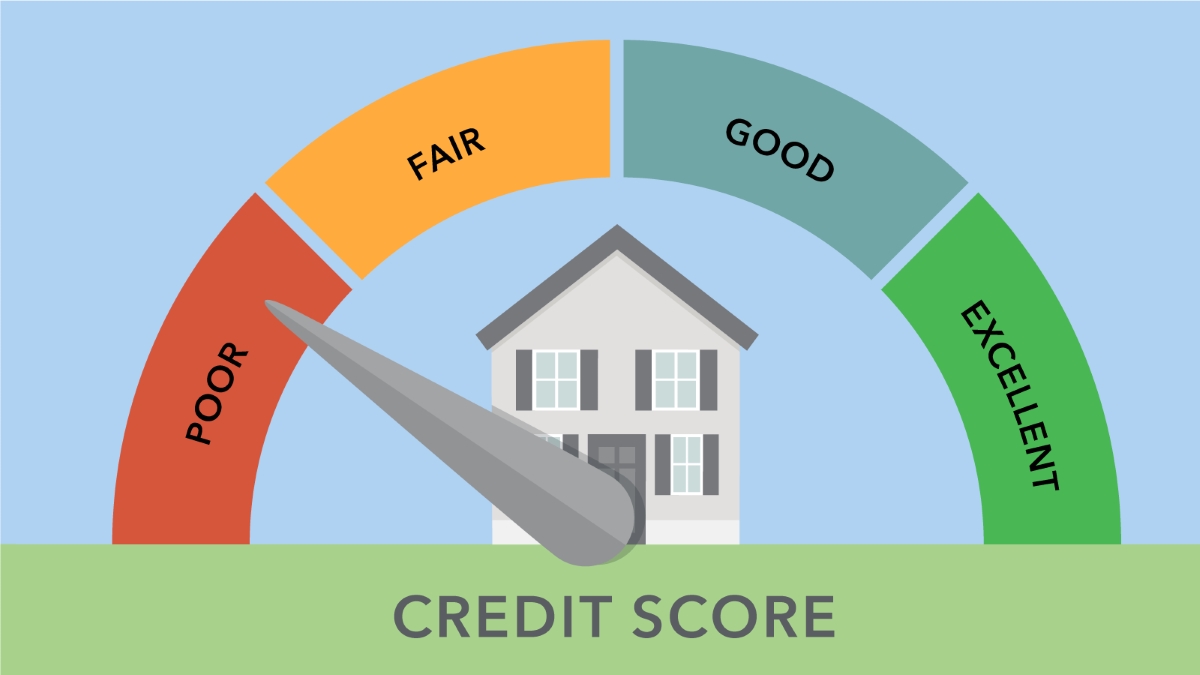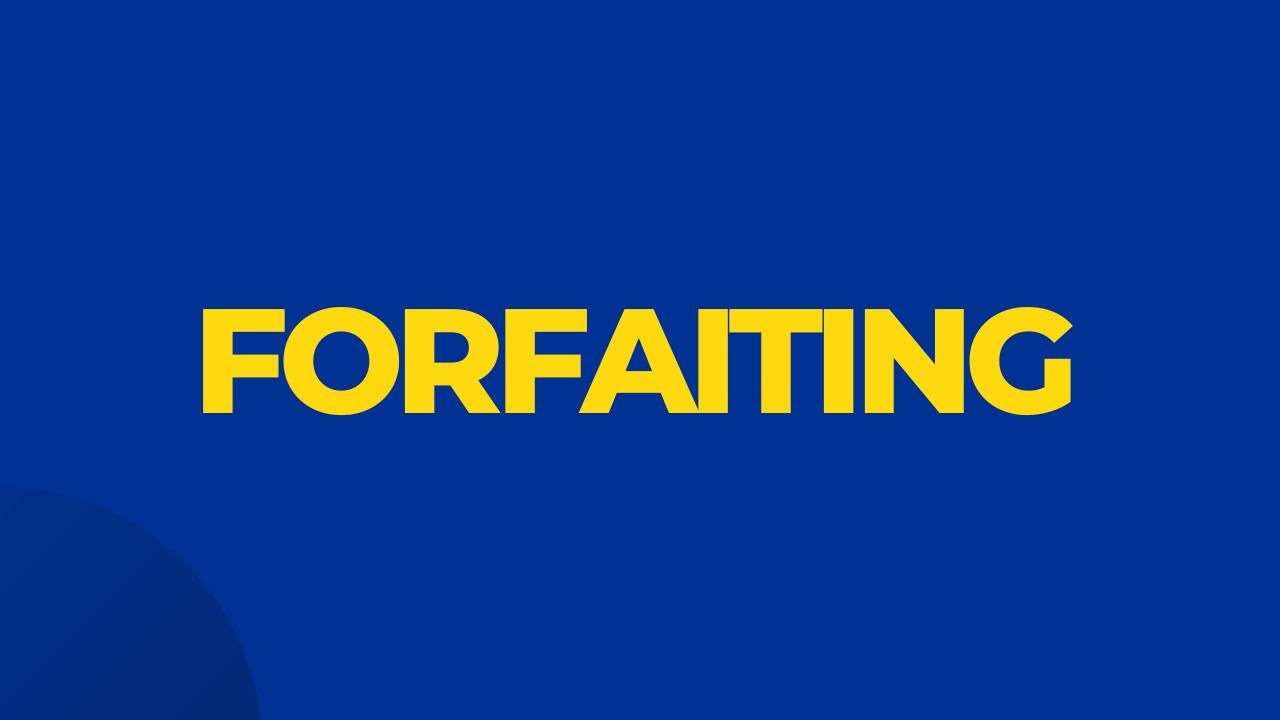

Finance
How Does Crowdfunding Work
Published: December 22, 2023
Learn how crowdfunding works and how it can revolutionize finance, empowering individuals to support projects and businesses.
(Many of the links in this article redirect to a specific reviewed product. Your purchase of these products through affiliate links helps to generate commission for LiveWell, at no extra cost. Learn more)
Table of Contents
Introduction
Crowdfunding has emerged as a popular method for individuals and businesses to raise funds for various projects and ventures. With the rise of technology and the internet, crowdfunding has become more accessible and efficient than ever before, allowing individuals from across the globe to support and contribute to causes they believe in.
But what exactly is crowdfunding? How does it work? In this article, we will delve into the world of crowdfunding, exploring its types, processes, benefits, risks, and factors to consider before launching a crowdfunding campaign. We will also highlight some popular crowdfunding platforms and share success stories that demonstrate the power and potential of this funding method.
Crowdfunding is essentially the practice of raising small amounts of money from a large number of people, typically through an online platform. It offers a way for individuals, startups, non-profit organizations, and even established businesses to fund their projects, products, or services by appealing to a wide range of potential donors or investors.
Not only does crowdfunding provide a means to obtain the necessary funds, but it can also serve as a way to create awareness, validate ideas, and build a community around a project or cause. It allows individuals and businesses to tap into the collective support and resources of their network and beyond, opening up opportunities that may not have been available through traditional financing methods.
There are different types of crowdfunding models, each with its own unique characteristics and benefits. The most common types include donation-based crowdfunding, reward-based crowdfunding, equity crowdfunding, and debt crowdfunding.
In the following sections, we will explore each type in more detail, outlining how they work and the advantages they offer to fundraisers and investors. We will also provide insights into the crowdfunding process, including how to launch a successful campaign, as well as the potential benefits and risks associated with crowdfunding.
Whether you are an entrepreneur looking to launch a new product, a musician in need of funding for an album, a social activist seeking support for a cause, or an investor looking for exciting opportunities, understanding how crowdfunding works is essential in today’s digital age.
So, let’s dive into the world of crowdfunding and explore how this innovative form of financing can help you make your ideas a reality.
What is Crowdfunding?
Crowdfunding is a collective effort of individuals or organizations seeking financial support from a large number of people, typically through an online platform. It allows individuals or businesses to raise funds for various projects, ventures, or causes by appealing to a wide range of potential donors or investors.
Traditionally, seeking funding involved approaching banks, venture capitalists, or angel investors. However, crowdfunding has revolutionized the fundraising landscape by providing a more democratic and accessible way to procure funds. It allows anyone with a compelling idea or project to connect directly with potential supporters and secure financial contributions.
There are different types of crowdfunding, each with its own unique characteristics:
- Donation-based crowdfunding: In this model, individuals or organizations seek donations from the public to support a cause or social initiative. Contributors donate money without expecting anything in return, driven solely by their belief in the mission or purpose of the project.
- Reward-based crowdfunding: This type of crowdfunding involves offering rewards or incentives to individuals who contribute to a project. The rewards can range from early access to a product, exclusive merchandise, or personalized experiences. It allows fundraisers to offer something valuable in return for financial support.
- Equity crowdfunding: Equity crowdfunding enables individuals to invest in a business or startup in exchange for equity or shares. Investors become partial owners of the company, and the success of their investment is based on the future performance and growth of the business.
- Debt crowdfunding: Debt crowdfunding, also known as peer-to-peer lending or crowdlending, involves borrowing money from individuals or groups. The funds are repaid with interest over a specific period of time, similar to a traditional loan.
The process of crowdfunding typically involves creating a compelling campaign on a crowdfunding platform, setting a fundraising goal, and engaging potential backers through well-crafted pitches, videos, and updates. Crowdfunding platforms act as intermediaries, facilitating the connection between project creators and potential contributors.
One of the key advantages of crowdfunding is the ability to tap into a global network of individuals who share a common interest or passion. It allows fundraisers to reach a larger audience and connect with potential supporters who may be located in different countries or continents.
Crowdfunding also offers a unique opportunity for individuals or businesses to validate their ideas and gauge market interest before launching a product or venture. By showcasing their project to potential backers, fundraisers can receive valuable feedback and insights, helping them refine their offerings or business strategies.
Furthermore, crowdfunding has opened doors for underrepresented entrepreneurs or individuals seeking funding for projects that may not fit traditional investment criteria. It promotes inclusivity and provides a platform where innovative ideas, regardless of their size or niche, can find support and financial backing.
Next, we will dive deeper into the process of crowdfunding, exploring the steps involved in launching a successful campaign and discussing the benefits and risks associated with this funding method.
Types of Crowdfunding
Crowdfunding is a versatile funding method that offers different approaches to raising funds. Depending on the nature of your project or venture, you can choose from various types of crowdfunding models. Let’s explore some of the most common types:
- Reward-based crowdfunding: In this model, individuals or businesses offer incentives or rewards to contributors in exchange for their financial support. These rewards can range from early access to a product, limited-edition merchandise, or exclusive experiences. Reward-based crowdfunding is especially popular among creative projects, such as films, music albums, and art exhibitions, where backers are eager to support and receive something unique in return.
- Equity crowdfunding: Equity crowdfunding allows individuals to invest in a company or startup in exchange for equity or shares. Investors become partial owners of the business and may receive dividends or a share of the profits in the future. This model is commonly used by early-stage startups and entrepreneurs seeking funding to fuel their growth and expansion.
- Debt crowdfunding: Debt crowdfunding, also known as crowdlending or peer-to-peer lending, involves borrowing money from individuals or groups. Fundraisers commit to repaying the borrowed amount within a specified timeframe and with a predetermined interest rate. This form of crowdfunding is similar to a traditional loan, but it provides an opportunity for individuals or businesses who may not qualify for a bank loan to secure financing.
- Donation-based crowdfunding: Donation-based crowdfunding involves seeking financial support without providing any tangible rewards in return. Fundraisers typically appeal to the generosity and goodwill of individuals who believe in their cause or want to support a social initiative. This type of crowdfunding is commonly used by nonprofit organizations, charity campaigns, and individuals seeking help during a difficult time or personal crisis.
Each crowdfunding model has its own advantages and considerations. Determining the right type for your project depends on several factors, including the nature of your venture, your target audience, and the resources you can offer in return for support.
It is also important to note that some crowdfunding platforms specialize in specific types of crowdfunding, while others offer a combination of models. Research and select a platform that aligns with your project’s goals and target audience.
Now that you have a better understanding of the different types of crowdfunding, let’s move on to the next section, where we will explore the process of crowdfunding and the steps involved in launching a successful campaign.
Process of Crowdfunding
Crowdfunding involves a series of steps that fundraisers need to follow to launch and run a successful campaign. While the specific process may vary depending on the crowdfunding platform and the type of campaign, here are the general steps involved:
1. Define Your Project: Start by clearly defining your project or venture. Clearly articulate your goals, objectives, and what you aim to achieve with the funds raised through crowdfunding. Develop a compelling story that resonates with potential backers and helps them understand the value and impact of your project.
2. Choose the Right Platform: Research and select a crowdfunding platform that aligns with your project’s goals, target audience, and funding model. Consider the platform’s reputation, user base, fees, and features offered to fundraisers.
3. Create an Engaging Campaign: Design a visually appealing and engaging campaign page. Use high-quality images, videos, and compelling content to convey your message effectively. Clearly state your fundraising goal, how the funds will be used, and what sets your project apart.
4. Set a Realistic Funding Goal: Determine the amount of funds you need to achieve your project objectives and set a realistic funding goal. Striking a balance between an ambitious goal and an achievable one is crucial to gain the trust and support of potential backers.
5. Promote Your Campaign: Utilize various marketing channels, such as social media, email newsletters, and personal networks, to spread the word about your crowdfunding campaign. Engage with potential backers, respond to inquiries, and provide regular updates to keep them informed and involved.
6. Offer Compelling Rewards: Determine attractive and valuable rewards for different contribution levels. Create a range of incentives that motivate potential backers to contribute more. Ensure that the rewards align with your project and provide genuine value to your supporters.
7. Engage with Backers: Interact with your backers throughout the campaign. Show appreciation for their support and keep them updated on the progress of your project. Respond to comments, address concerns, and maintain transparent communication to foster a sense of trust and community.
8. Manage and Fulfill Rewards: Once your campaign ends successfully, manage the logistics of delivering the promised rewards to your backers. Stay organized and ensure timely fulfillment to maintain a positive relationship with your supporters.
9. Follow Up and Express Gratitude: After completing your project, express gratitude to your backers. Share the outcomes and impact achieved with their support. Consider providing updates on future endeavors and maintaining a relationship with your community.
Success in crowdfunding requires careful planning, effective communication, and continuous effort. Remember that crowdfunding is not just about raising funds; it is also an opportunity to build a community and gain exposure for your project or venture.
In the next section, we will discuss the benefits and risks associated with crowdfunding, so you can make an informed decision before embarking on a crowdfunding campaign.
Benefits and Risks of Crowdfunding
Crowdfunding offers several benefits for individuals and organizations looking to secure funding for their projects or ventures. However, it is important to be aware of the risks involved. Let’s explore the benefits and risks of crowdfunding:
Benefits of Crowdfunding:
1. Access to Capital: Crowdfunding provides a platform for individuals and businesses to access capital that may not be available through traditional financing methods. It allows you to tap into a larger pool of potential contributors who are willing to support innovative and unique ideas.
2. Market Validation: Launching a crowdfunding campaign allows you to validate your concept or product by measuring the market demand. It helps you gauge interest, receive feedback, and make necessary adjustments before fully launching your project.
3. Community Building: Crowdfunding helps you build a community around your project. Backers become more than just supporters—they become advocates and brand ambassadors. They can provide valuable insights, offer feedback, and help spread the word.
4. Marketing and Exposure: Crowdfunding campaigns receive exposure on the platform and can generate media attention and social media buzz. This exposure can help attract potential customers, investors, and partners beyond the initial crowdfunding campaign.
5. Non-Financial Support: Alongside financial contributions, crowdfunding often generates non-financial support. Backers may offer expertise, mentorship, or connections, which can be invaluable for project success.
Risks of Crowdfunding:
1. Failure to Reach Funding Goal: If you fail to reach your fundraising goal during the campaign period, you may not receive any funds. It is essential to set a realistic funding goal and have a well-executed marketing strategy to attract enough backers.
2. Expectations and Pressure: Crowdfunding involves meeting the expectations of your backers, especially when offering rewards. Failure to deliver or delays in fulfillment can result in negative reviews or damage your reputation.
3. Intellectual Property Risks: There is a risk of intellectual property theft or idea replication when showcasing your project on a public platform. Be cautious about sharing proprietary information and consider legal protection if necessary.
4. Competition: Crowdfunding platforms are crowded, and competition for attention and backers can be intense. Your campaign needs to stand out and offer a compelling value proposition to attract supporters.
5. Oversaturation: Crowdfunding platforms see a high volume of campaigns, which can lead to oversaturation. It may be challenging to capture the attention of potential backers among numerous competing projects.
By understanding the benefits and risks associated with crowdfunding, you can make informed decisions and mitigate potential challenges before launching your campaign.
Next, we will explore the factors you should consider before launching a crowdfunding campaign, helping you increase your chances of a successful fundraising endeavor.
Factors to Consider before Launching a Crowdfunding Campaign
A successful crowdfunding campaign requires careful planning and preparation. Before launching your campaign, consider the following factors to maximize your chances of success:
1. Clearly Define Your Project: Before launching a crowdfunding campaign, clearly define your project and its objectives. Communicate your vision, goals, and impact to potential backers. This ensures that you have a compelling story that resonates with your audience and sets your project apart from others.
2. Research Your Target Audience: Understand your target audience and identify the key demographics and interests of potential backers. This knowledge will help you tailor your campaign messaging and rewards to appeal to your target audience.
3. Set a Realistic Funding Goal: Set a realistic funding goal based on your project’s needs and consider the costs involved. Be mindful that reaching your fundraising goal within the specified time frame is crucial, as failing to do so may result in not receiving any funds.
4. Develop a Comprehensive Marketing Strategy: Plan a comprehensive marketing strategy to promote your campaign. Utilize various channels, including social media, email marketing, and networking, to generate buzz and attract potential backers. Leverage your personal and professional networks to expand your reach.
5. Craft Compelling Rewards: Design attractive and appealing reward tiers for different contribution levels. Ensure that your rewards provide value to your backers and are directly related to your project. Consider offering limited-edition rewards or unique experiences to incentivize higher contributions.
6. Create High-Quality Visuals and Content: Invest in high-quality visuals, including images and videos, to make your campaign visually appealing. Craft compelling and engaging content that clearly explains your project and communicates your passion and expertise.
7. Offer Regular Updates: Keep your backers engaged throughout the campaign by providing regular updates on the progress, milestones achieved, and any challenges faced. Transparent communication builds trust and fosters a sense of involvement among your supporters.
8. Prepare for Fulfillment: Consider the logistics involved in fulfilling your campaign rewards. Have a plan in place to ensure timely delivery of rewards to your backers. Managing fulfillment effectively is vital to maintaining a positive reputation.
9. Engage with Your Community: Actively engage with your community by responding to comments, answering questions, and acknowledging contributions. Show your appreciation for the support and build a strong relationship with your backers.
10. Plan Post-Campaign Activities: Prepare for what happens after your campaign ends successfully. Have a plan in place for continued communication with your backers, including providing updates on project milestones and expressing gratitude for their support.
Considering these factors before launching a crowdfunding campaign will help you optimize your chances of reaching your funding goal and maintaining a positive relationship with your backers. Preparation and thoughtful execution are key to a successful campaign.
In the next section, we will explore some popular crowdfunding platforms to help you choose the right platform for your campaign.
Popular Crowdfunding Platforms
When it comes to launching a crowdfunding campaign, choosing the right platform is crucial. There are several crowdfunding platforms available, each with its own unique features, user base, and focus areas. Let’s explore some of the popular crowdfunding platforms:
1. Kickstarter: Kickstarter is one of the most well-known crowdfunding platforms, with a focus on creative projects ranging from art and music to technology and design. It operates on a reward-based model, where project creators offer rewards to backers who contribute to their campaigns.
2. Indiegogo: Indiegogo is a versatile crowdfunding platform that caters to a wide range of project categories, including technology, film, music, and social causes. It offers both reward-based and equity-based crowdfunding options, providing flexibility for fundraisers.
3. GoFundMe: GoFundMe is a popular donation-based crowdfunding platform, which primarily focuses on personal and social causes, such as medical expenses, education, emergencies, and charitable initiatives. It allows individuals to create fundraising campaigns and receive donations without offering rewards.
4. Patreon: Patreon is a unique crowdfunding platform that caters to creators, including artists, musicians, podcasters, and content creators. It operates on a subscription-based model, where supporters can contribute a recurring payment to access exclusive content and support their favorite creators.
5. SeedInvest: SeedInvest is an equity crowdfunding platform that focuses on connecting early-stage businesses with accredited investors. It provides an opportunity for investors to invest in startups in exchange for equity or ownership in the company.
6. CircleUp: CircleUp specializes in equity crowdfunding for consumer product companies. It connects accredited investors with innovative consumer brands seeking funding to grow and expand their businesses.
7. Crowdfunder: Crowdfunder is an equity-based crowdfunding platform that focuses on early-stage startups and small businesses. It brings together entrepreneurs and investors, allowing businesses to raise capital in exchange for equity.
8. RocketHub: RocketHub is a crowdfunding platform that covers a wide range of project categories, including art, business, science, and technology. It operates on a reward-based model, where project creators offer rewards in exchange for financial contributions.
These are just a few examples of popular crowdfunding platforms, each catering to different project types and funding models. Before choosing a platform, consider factors such as fees, audience reach, platform reputation, and suitability for your project.
It is important to thoroughly research and understand the platform’s terms, conditions, and requirements before launching your campaign. Selecting the right platform that aligns with your project goals and target audience can significantly impact the success of your crowdfunding campaign.
In the next section, we will delve into some inspiring success stories of crowdfunding campaigns that have achieved remarkable results.
Success Stories of Crowdfunding Campaigns
Crowdfunding has paved the way for numerous remarkable success stories, where individuals and businesses have taken their ideas from conception to reality with the support of the crowd. Let’s explore some inspiring examples of successful crowdfunding campaigns:
1. Oculus Rift: Oculus Rift, a virtual reality headset, gained widespread popularity and success through its Kickstarter campaign. With a goal of $250,000, the campaign raised over $2.4 million from enthusiastic backers. Eventually, Oculus Rift was acquired by Facebook for $2 billion, revolutionizing the virtual reality industry.
2. Pebble Time: Pebble Time, a smartwatch, surpassed its crowdfunding goal on Kickstarter within minutes of launching. With over 78,000 backers, the campaign raised over $20 million, making it one of the most successful crowdfunding campaigns at the time. Pebble Time went on to become a leading player in the smartwatch market.
3. Exploding Kittens: Exploding Kittens, a card game created by Elan Lee and The Oatmeal’s Matthew Inman, became a viral sensation. The game’s Kickstarter campaign exceeded its initial funding goal of $10,000 within minutes, ultimately raising over $8 million from more than 219,000 backers.
4. Coolest Cooler: The Coolest Cooler, an innovative cooler equipped with features like a blender, Bluetooth speaker, and USB charger, initially struggled to find investors. However, through its Kickstarter campaign, it raised over $13 million, becoming one of the most funded campaigns in crowdfunding history.
5. Double Fine Adventure: Double Fine Productions, a game development studio led by Tim Schafer, launched a Kickstarter campaign for an old-school point-and-click adventure game. The campaign was a massive success, raising over $3 million and reigniting interest in the adventure game genre.
6. Fidget Cube: Fidget Cube, a small handheld toy designed to help people relieve stress and stay focused, gained significant traction on Kickstarter. Surpassing its initial funding goal, the campaign raised over $6.4 million from more than 150,000 backers.
7. Reading Rainbow: The iconic educational TV program, Reading Rainbow, successfully ran a crowdfunding campaign on Kickstarter to bring its content to more schools and students. The campaign raised over $5.4 million, allowing the program to develop a digital platform and reach a broader audience.
These success stories showcase the power of crowdfunding in turning innovative ideas into reality. Through the support of the crowd, these projects exceeded their funding goals, gained widespread recognition, and went on to make a significant impact in their respective industries.
These examples demonstrate that crowdfunding has the potential to catapult projects and ventures to new heights, providing opportunities for individuals and businesses to achieve their aspirations.
In the final section, we will conclude our exploration of crowdfunding, summarizing the key takeaways and emphasizing its significance in the modern funding landscape.
Conclusion
Crowdfunding has revolutionized the way individuals, startups, and organizations raise funds for their projects, ventures, and causes. This innovative funding method harnesses the power of the crowd to provide financial support, validation, and community building opportunities.
Throughout this article, we explored the fundamentals of crowdfunding, including its definition, types, and the process involved in launching a successful campaign. We also discussed the benefits and risks associated with crowdfunding, emphasizing the importance of careful planning, understanding your target audience, and crafting captivating campaigns.
By leveraging popular crowdfunding platforms such as Kickstarter, Indiegogo, and GoFundMe, individuals and businesses have achieved remarkable success, turning their ideas into reality and making a profound impact in various industries.
Crowdfunding goes beyond just raising funds; it allows project creators to validate their concepts, engage with their community, and gain exposure in a highly competitive landscape. It offers opportunities for underrepresented entrepreneurs, creators, and social activists to access capital and support, empowering them to pursue their dreams and make a positive change.
However, crowdfunding is not without its challenges. Setting realistic funding goals, delivering on promises, and standing out among a sea of campaigns require meticulous planning and execution. Proper research, compelling storytelling, and ongoing communication with backers are essential for running a successful crowdfunding campaign.
In conclusion, crowdfunding continues to shape the funding landscape, offering individuals and businesses an alternative way to finance their projects and engage with a global audience. It embodies the spirit of collaboration, innovation, and community support, democratizing the funding process and bringing ideas to life.
Whether you are a creator seeking to launch a new product, an artist looking to fund a passion project, or a social entrepreneur with a vision for change, crowdfunding presents an opportunity to realize your aspirations and connect with a supportive network of backers who believe in your vision.
So, seize the opportunity, plan carefully, and embark on your crowdfunding journey to turn your dreams into reality. The crowd is waiting to support you.














